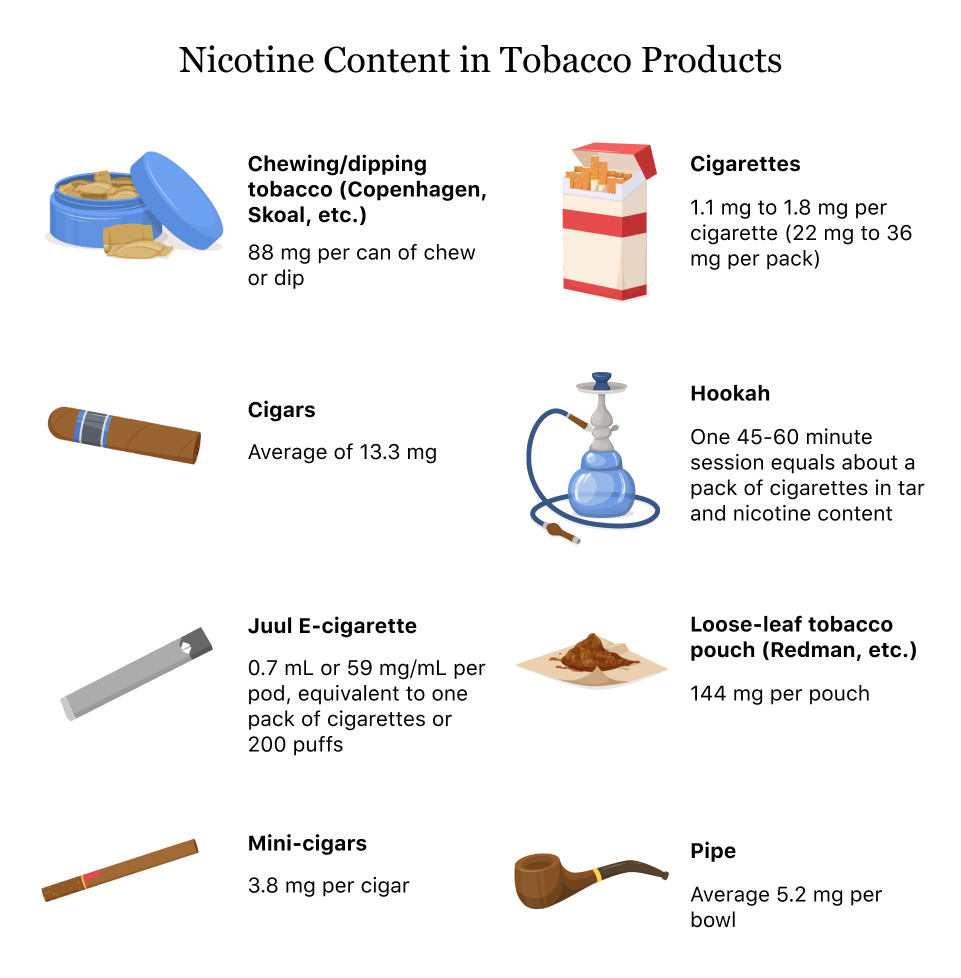Nicotine is an addictive substance found in cigarettes and other forms of tobacco, yet few people know how this toxic compound is actually made. Understanding the production of nicotine can help us to better understand its effects on our bodies, and why it is so addictive. In this article, we will explain the process that nicotine undergoes from start to finish, from the extraction method to the final product.
Nicotine is made by extracting it from tobacco leaves, then further synthesizing it into a range of forms, including nicotine salts, freebase nicotine, and nicotine liquid. It can also be produced artificially in a laboratory. The process of extracting nicotine from tobacco involves treating the leaves with a solvent, such as hexane, to isolate the alkaloid. The isolated nicotine is then purified and synthesized into other forms.

How is Nicotine Synthesized?
Nicotine is a naturally-occurring chemical found in tobacco plants, and it can be synthesized in the laboratory for use in products like e-cigarettes and nicotine patches. Nicotine is synthesized through a process known as the Birch reduction, which involves the reduction of nicotine nitrile to nicotine base. The process involves the use of a catalyst, typically sodium or potassium. This is then followed by the addition of a reducing agent, such as sodium borohydride, to yield the desired product. The final step is the purification of the nicotine base to ensure that it is free from impurities.
The Birch reduction process is relatively simple and straightforward, and it can be completed in a laboratory setting with relatively little equipment. The process typically takes a few hours to complete, and it yields a relatively pure form of nicotine. This pure form of nicotine is then used in various products, such as e-cigarettes and nicotine patches.
The Birch reduction process is not the only method used to synthesize nicotine, however. Other processes, such as the Hofmann degradation and the Wurtz reaction, can also be used to synthesize nicotine. Each of these methods has its own advantages and disadvantages, and they may be better suited to certain applications than others.
Reactions Involved in Nicotine Synthesis
The Birch reduction process involves two distinct reactions. The first is the reduction of nicotine nitrile to nicotine base. This is accomplished by the addition of a reducing agent, such as sodium borohydride, to the nicotine nitrile. This reaction yields the desired product, nicotine base.
The second reaction is the purification of the nicotine base. This is accomplished by the use of various techniques, such as distillation and filtration. These techniques remove any impurities from the nicotine base, resulting in a pure form of nicotine.
Advantages and Disadvantages of Nicotine Synthesis
The Birch reduction process has several advantages. It is relatively simple and straightforward, and it can be completed with relatively little equipment. Additionally, the process yields a relatively pure form of nicotine, which is ideal for use in products such as e-cigarettes and nicotine patches.
However, the Birch reduction process also has some disadvantages. It involves the use of hazardous chemicals, such as sodium borohydride, which must be handled with caution. Additionally, the process takes a few hours to complete, which can be time-consuming.
Conclusion
Nicotine can be synthesized in the laboratory through a process known as the Birch reduction. This process involves the reduction of nicotine nitrile to nicotine base, followed by the purification of the nicotine base. The Birch reduction process is relatively simple and straightforward, and it yields a relatively pure form of nicotine. However, the process also has some disadvantages, such as the use of hazardous chemicals and the time it takes to complete.
Frequently Asked Questions
What is Nicotine?
Nicotine is an alkaloid compound found in the nightshade family of plants. It is a stimulant and is the main psychoactive compound found in cigarettes and other tobacco-based products. Nicotine acts on the central nervous system and is highly addictive. It can be ingested through smoking, chewing, or other methods.
What are the Sources of Nicotine?
Nicotine is mainly found in the leaves of Nicotiana tabacum, as well as in other species of the nightshade family. It can also be synthesized from nicotine salts or from other sources, such as eggplant.
How is Nicotine Made?
Nicotine is produced by extraction from the leaves of Nicotiana tabacum and other species of the nightshade family. The extraction process involves using organic solvents to isolate nicotine from the plant material. The resulting nicotine solution is then purified and concentrated. The final product is a white to yellowish powder that is ready for use in cigarettes and other products.
What are the Effects of Nicotine?
Nicotine has both positive and negative effects on the body. It is a stimulant, so it can increase alertness, improve concentration, and reduce fatigue. On the other hand, nicotine is a highly addictive substance and can lead to serious health problems including lung cancer and heart disease.
Is Nicotine Harmful?
Yes, nicotine is a highly addictive substance that can lead to serious health problems. Prolonged or heavy use of nicotine can increase the risk of developing cancer, heart disease, and other serious illnesses.
How Can Nicotine Be Avoided?
The best way to avoid nicotine is to abstain from using tobacco and other nicotine-based products. If you are currently using nicotine, talk to your doctor about quitting and explore available resources to help you quit. There are also medications available to help reduce nicotine cravings and withdrawal symptoms.
In conclusion, nicotine is a colorless, odorless, and highly addictive substance that is found in tobacco products. It is made from tobacco leaves and is a combination of over 4,000 chemicals, including formaldehyde and arsenic. Nicotine is a highly addictive substance and has been linked to various serious health issues. It is important to understand the science behind how nicotine is made and the risks associated with nicotine in order to make informed decisions about using tobacco products.

